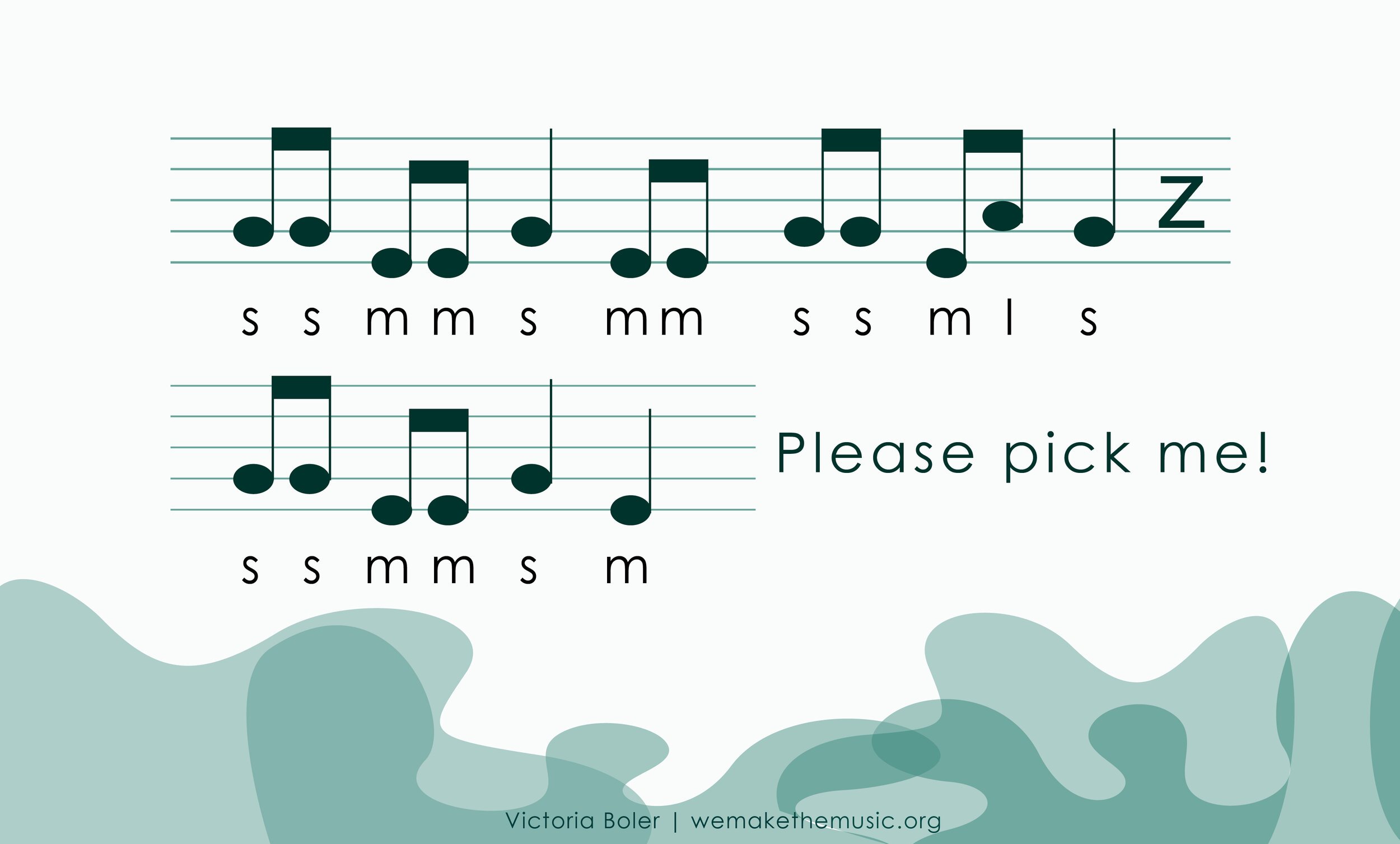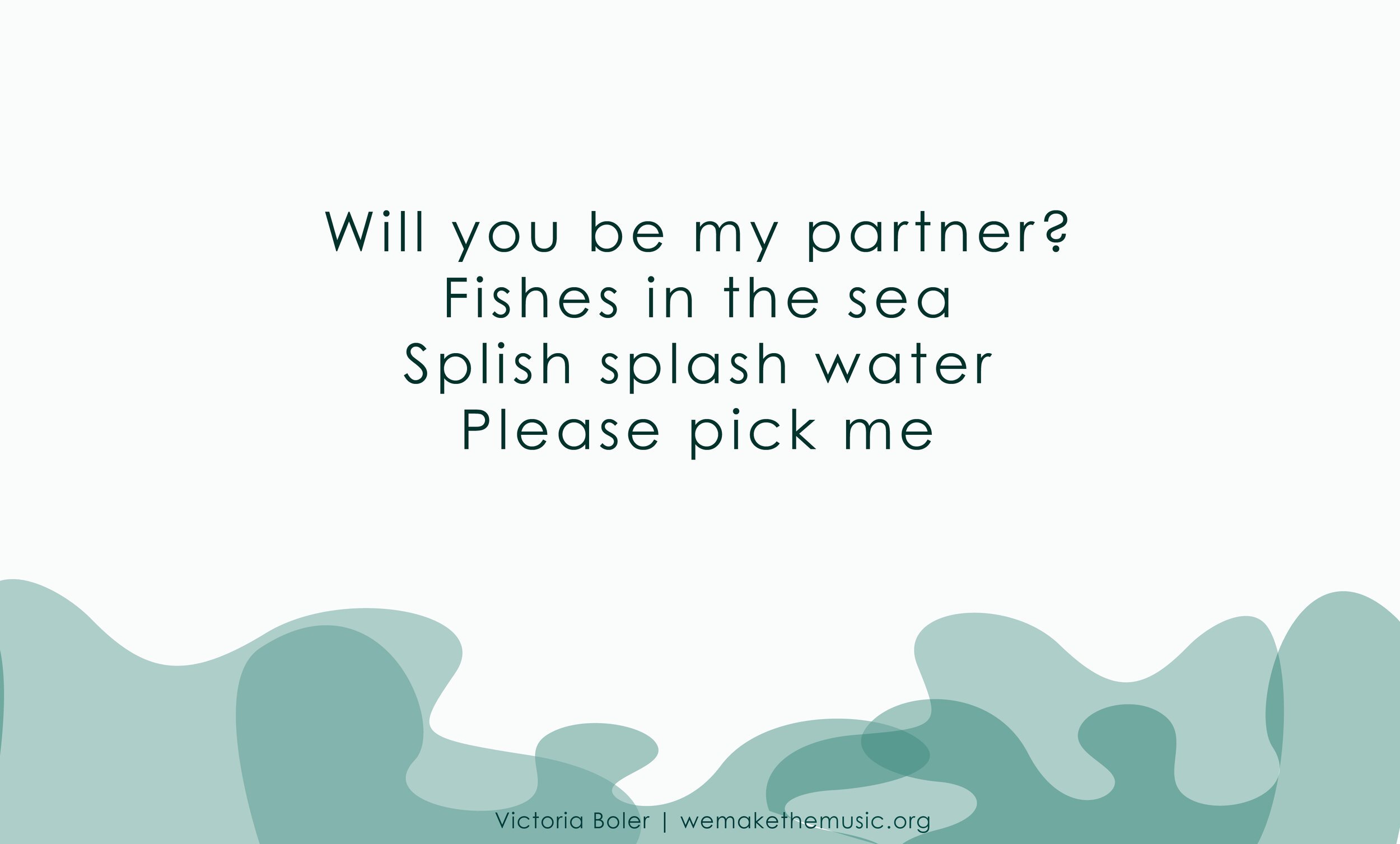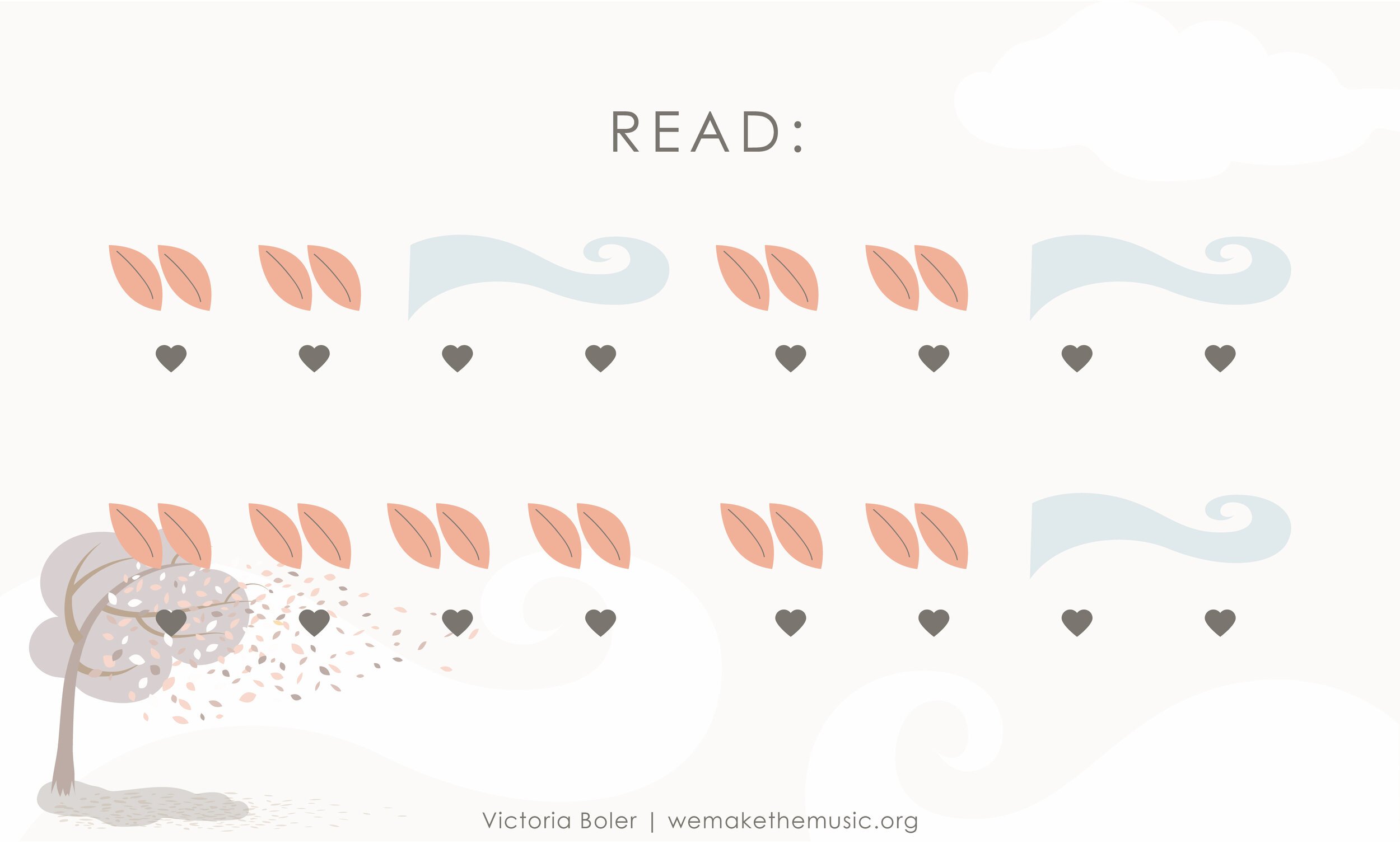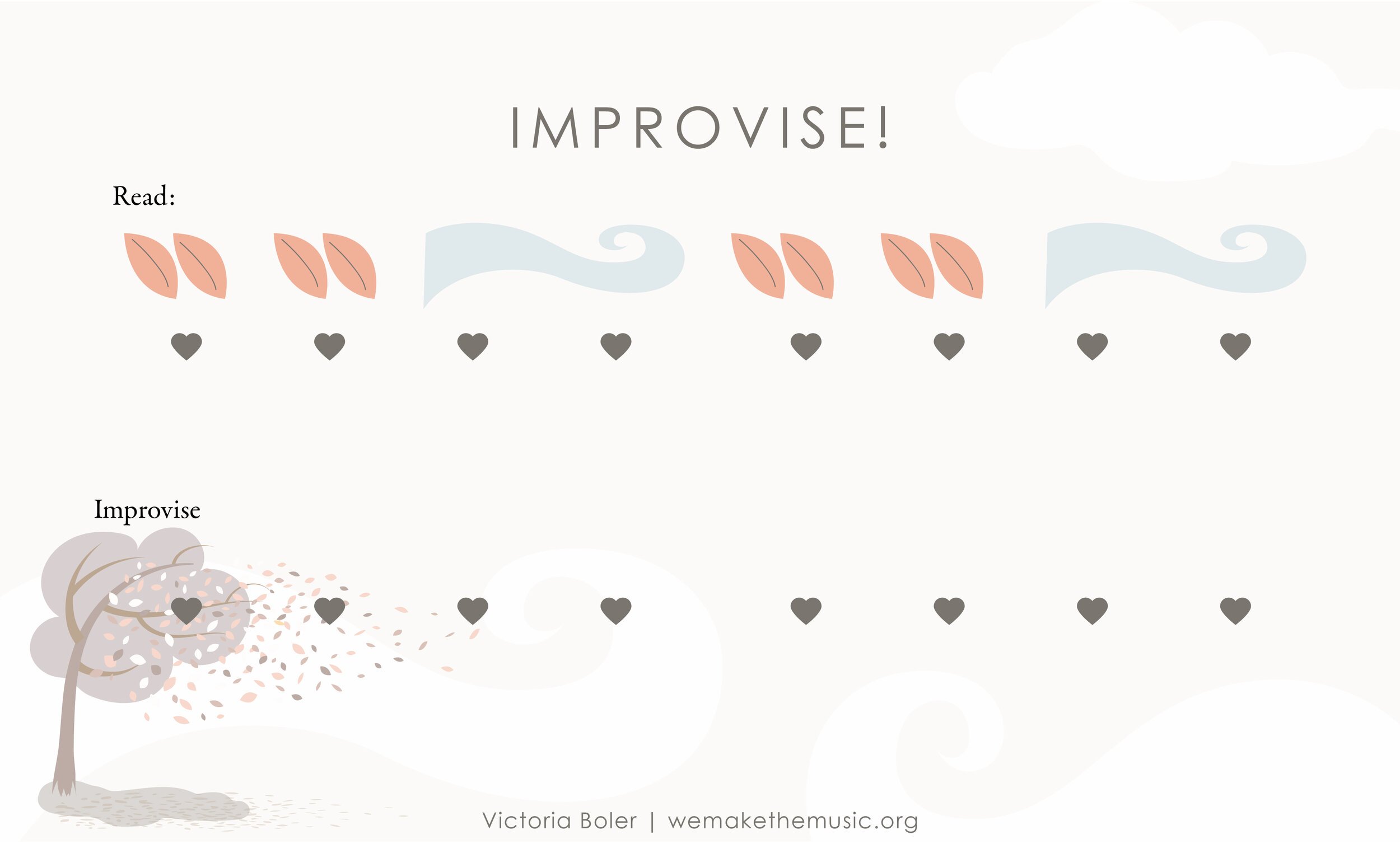2nd Grade Improvisation Activities
There are so many forms musical choice can make in our classrooms. One of them is improvisation.
Improvisation can take many different forms as well. Students could improvise with speech, singing, recorder, barred instruments, or unpitched percussion. They can also improvise movements. Improvisation might happen in a large group, small group, or individually. Improvisation might be free (“play whatever you want on this xylophone”) or structured (“play two measures in the pentatonic scale and end on do”).
All forms of improvisation are valuable, but this post will focus on a few ideas for structured improvisation in 2nd grade. In my curriculum outline, 2nd grade works on:
la
half notes
do
takadimi
All of the slides for this collection of improvisation activities are available in the resources page.
Before We Begin:
There are two blog posts you should check out before reading this one:
This post outlines steps we can take to make students more successful in improvisation. It covers some prerequisites for successful improvisation, strategies to use, and thoughts on a culture of creativity.
This post shares more examples of improvisation sequences. Specifically, it looks at how we can bridge the gap between activities like performance and sight reading and the creative activity of improvisation.
Vocal Improvisation with La
Ickle Ockle
I first heard this song from a fabulous pedagog while I was in my undergrad, and it’s stuck with me ever since!
kodaly.hnu.edu
The game is simple: students are standing in a circle as they sing the song. At the end of the song, students must find a partner (the partner may be anyone in the circle besides their immediate neighbor). Any student without a partner goes to the middle and the game begins again.
Vocal improvisation:
Many of us find vocal improvisation to be intimidating since there is no set of pitches for students to “type” on. Aurally, it can be trickier to improvise vocally with structured improvisation. This activity requires students to have truly internalized the sml toneset!
The Activity:
All students sing the song like normal.
One student improvises the following rhyme (all students sing the last line together)
Will you be my partner?
Fishes in the sea
Splish splash water
Please pick me
As students sing, the teacher should keep a simple bordun to keep everyone on track. That keeps everyone on the same page tonally. It’s also helpful to have the class pat a steady beat as a student improvises.
Here’s an example of what students might come up with:
Click here to download the slides.
With all these activities, I recommend gradually sequencing down to individual improvisation. I like to move from the whole group improvising, and then after several steps, ask students to improvise on their own. Here’s my recommended sequence with this activity:
Whole class sings the song, whole class improvises
Half the class sings the song, the other half improvises
The whole class sings the song, small groups improvise
Students divide into partners. One sings the song, the other improvises.
Movement Improvisation with Half Notes
Who Has Seen the Wind?
I love this song because it can sound musically sophisticated, even though it contains a simple set of musical elements.
Improvising with Movement:
The goal here is to improvise with half notes using movement.
Depending on how much movement you already incorporate into your curriculum, you might want to sequence this activity by improvising and having students copy you. You can also have students do the activity seated, using only their hands.
The Activity:
Students tiptoe, step, or slide depending on the type of rhythm they want to create.
Notice that the first eight beats of the song are performed together. This contextualizes the rhythms of the song so students have an aural starting point. It also helps the entire class stay together as they create their own movements.
I designed this activity for students in half note preparation, so you’ll notice the slides use iconic notation instead of standardized Western notation. You can easily transfer the iconic notation to standardized notation when your students are ready!
Here’s one example of what students might come up with:
This activity looks stunning with students all performing their own movement improvisations!
It’s a perfect activity to add to a 2nd grade informance or other musical sharing program.
Click here to download the slides.
Pitched Percussion Improvisation with Do
Rocky Mountain
Erdei, P. (1974) 150 American folk songs. Boosey & Hawks.
This is a song that was always in the back of my mind, but one that I didn’t start to love until fairly recently. The song has additional verses (that you can find here), but I tend to stick to the first verse only.
I’ve written more about how I use this song to improvise with the full pentatonic scale here.
Improvising with Pitched Percussion:
A significant barrier to improvising with pitched percussion is knowing which direction on the instrument is pitched higher and which is pitched lower.
To help with this, I often have students start playing the instruments in a vertical position instead of horizontal. That’s another reason I love using this song for pitched percussion: the mountain visual is perfect for helping students remember the pitch direction of the barred instruments!
The Activity:
The teacher improvises eight beats on a barred instrument. The class answers with the next eight beats, ending on do. All students sing the last two lines of the song in unison.
One of the important things you can do to get your students more comfortable with improvising is to improvise yourself in front of them. This shows what a “good” improvisation sounds like, and it takes some the pressure off what could otherwise be an intimidating process.
I recommend starting this process by clapping improvised rhythmic patterns instead of jumping straight to barred instruments. In general, we almost always want to start with body percussion before transferring musical material to instruments!
Here’s one example of what students might come up with:
Click here to download the slides.
Unpitched Percussion Improvisation with Takadimi
Tideo
Tideo has two games my students love!
Brummitt, D & Choksy, L. (1987). 120 singing games and dances. Prentice Hall Inc.
The first game works great for younger players. Students stand in a circle with their arms above their heads to create “windows.” One player skips around the circle until m. 7 (jingle at the window). At that point, the student skips in a circle around the closest student (going through the windows). The chosen student follows the first student around the circle, and the game continues until all the students in the circle have been chosen.
However, my preferred activity with this song is a play party. It’s great for older beginners, and I've also used it successfully at the 2nd grade level.
Students create an inner and outer circle, with partners facing each other
Every "Skip one window" - outside circle passes one person to the right
Every "Tideo" - pat, clap, clap partners hands
Every "Jingle at the window" - switch places with partner so outside circle is on the inside, and inside circle is on the outside.
Improvising with unpitched percussion:
This activity can be done with virtually any type of hand drum - tubanos, djembes, or congas all work great!
You can also expand the activity to include other unpitched percussion instruments as well, as long as your tempo is not too fast. Consider maracas, triangles, tambourines, or jingle bells.
The Activity:
In a circle, each student improvises four beats, the class responds with “jingle at the window, tideo.”
Like the process for Rocky Mountain, I recommend having students play their improvisations on body percussion before transferring to instruments.
Here is an example of what students might come up with:
Click here to download the slides.
Musicians in 2nd grade have so much musical information they have gathered - both inside and outside the music classroom!
Through movement, singing, barred instruments, and unpitched percussion, students have an opportunity with these activities to show what they know in a fun, play-based way.

















